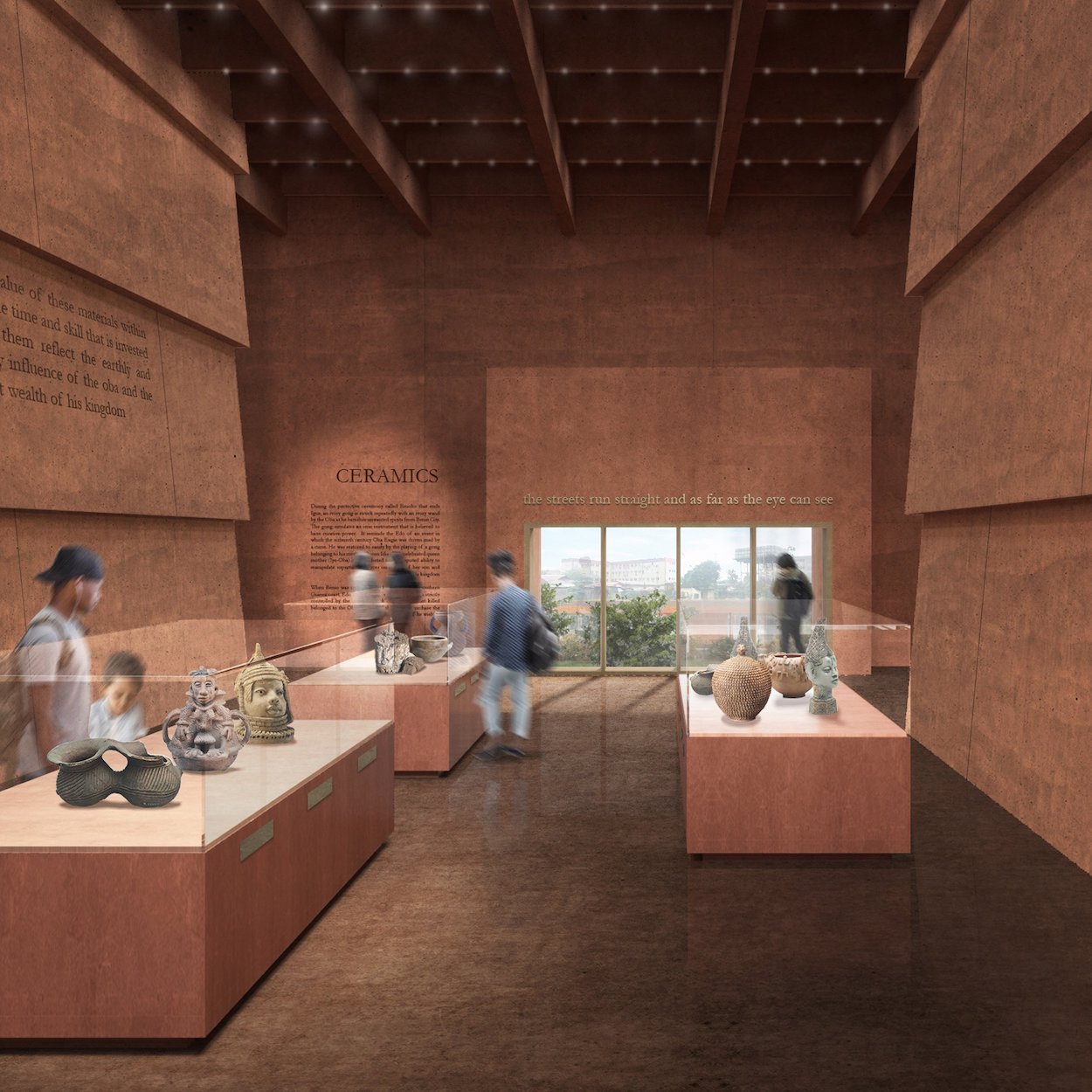In 1897, British soldiers invaded Edo, the seat of the centuries-old Kingdom of Benin, now known as Benin City, Nigeria. On a mission to avenge the death of explorer James Phillip, the troops pillaged up to 10,000 figurines, plaques, altars, and ceremonial objects dating back to the mid-16th century. These items are known as the Benin Bronzes and, over the past century, have made their way mostly into European and American museums. The British Museum in London has the world’s biggest collection at more than 700 pieces; others with large holdings include the Ethnological Museum of Berlin in the Humboldt Forum, Vienna’s Weltmuseum Wien, and the Metropolitan Museum of Art in New York. According to one report, 90 to 95 percent of Africa’s cultural heritage is held outside the continent by major museums.
Nigerians have called for the return of the stolen artifacts for decades, decrying their placement in Western museums as a potent reminder of colonialism’s ongoing reverberations throughout Africa. Their demands went largely unheard until 2017, when French president Emmanuel Macron vowed to return stolen artifacts to Africa from his country’s museums over the next five years. “African heritage cannot be a prisoner of European museums,” he said in a bid for permanent restitution. (He was being advised by art historian Bénédicte Savoy, who resigned from the Humboldt Forum’s advisory board after the museum, she alleges, ignored its anti-colonial critics.) Restitution has been slow going, though Germany has since agreed for Nigeria to reclaim ownership of 1,100 artifacts.
Enough artifacts have been returned to form a major new exhibition, “Art of Benin From Yesterday and Today: From Restitution to Revelation,” in the presidential palace of Cotonou. The response has been nothing short of enthusiastic, with sculptor Euloge Ahanhanzo Glèlè describing the moment as an “artistic awakening.”
More than 200,000 people have flocked to see the show, which presents the artifacts alongside pieces by 34 living artists to help contextualize their role within art history—and to uplift West Africa’s burgeoning art scene. Among the works, which came from the Quai Branly museum in Paris, are wooden effigies, two thrones, and four painted palatial gates. When the exhibition wraps up, on Aug. 28, it will travel to the nation’s coastal city of Ouidah, where authorities are building a slavery museum. Though further repatriation is expected to take years, architect David Adjaye is building the Edo Museum of West African Art to house the artifacts in Benin City by 2025.
“Generations of Africans have already lost incalculable history and cultural reference points because of the absence of some of the best artworks created on the continent,” Victor Ehikhamenor, a Lagos-based artist who was part of the Nigeria Pavilion at the 2017 Venice Biennale, wrote in a 2020 op-ed. “We shouldn’t have to ask, over and over, to get back what is ours.”
The repatriation efforts are a significant part of a broader push for the art industry to acknowledge its role in upholding legacies of colonialism and violence. When the Smithsonian announced the return of 29 stolen artifacts from its collection, it noted an upcoming policy on ethical collecting. New York recently passed a law that requires the state’s museums to display if artworks were stolen by the Nazi regime. Tracing a work’s origins, however, isn’t always easy. “Uncovering the provenance of a piece can be slow work that sometimes never reaches resolution,” Jackie Mansky wrote for Smithsonian. “That’s especially the case when art is swept up in war or political instability.”


